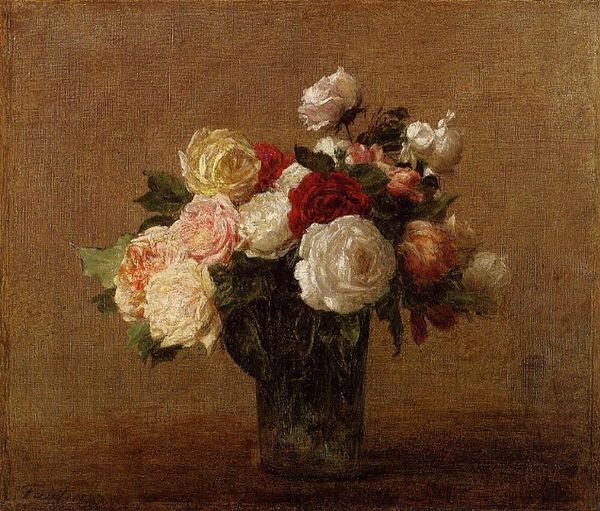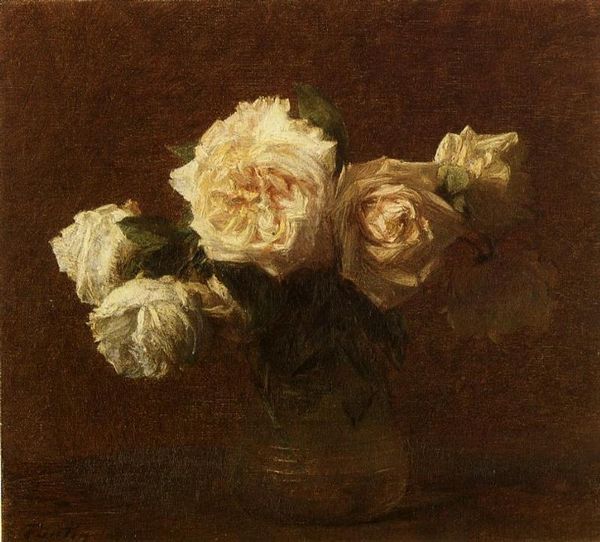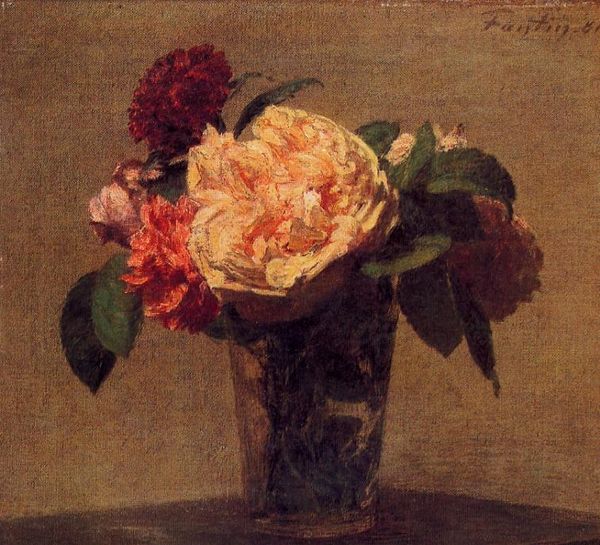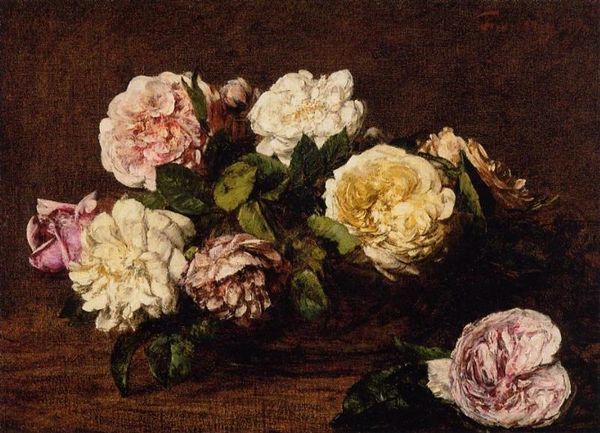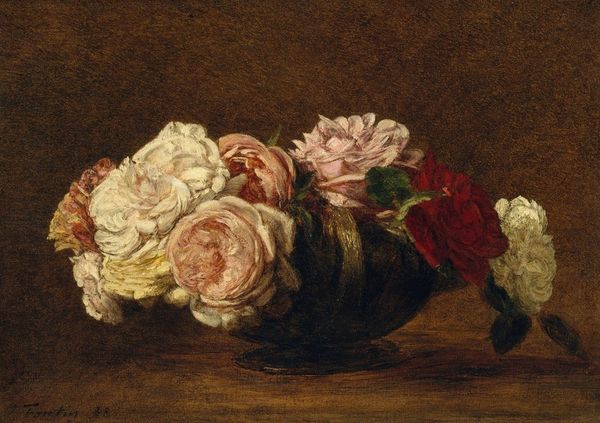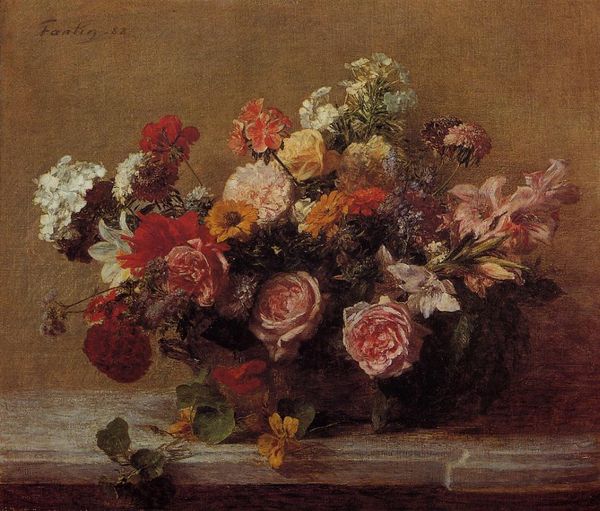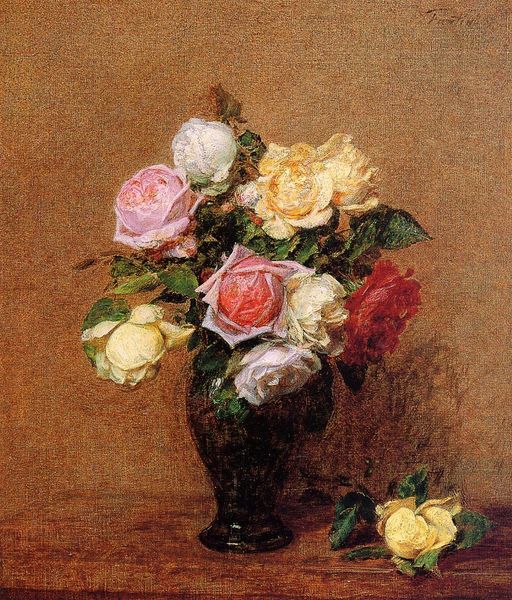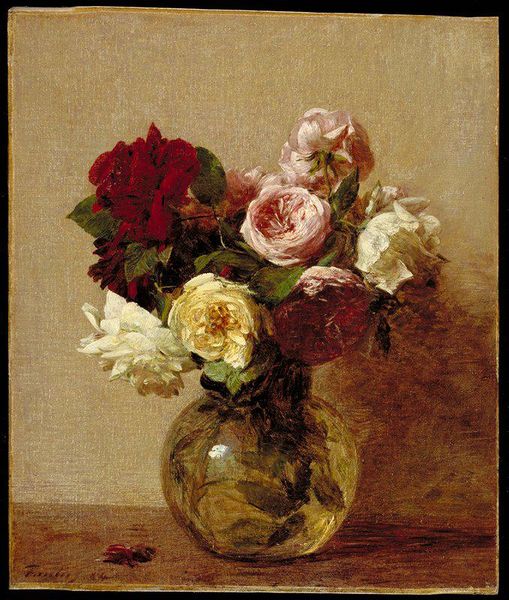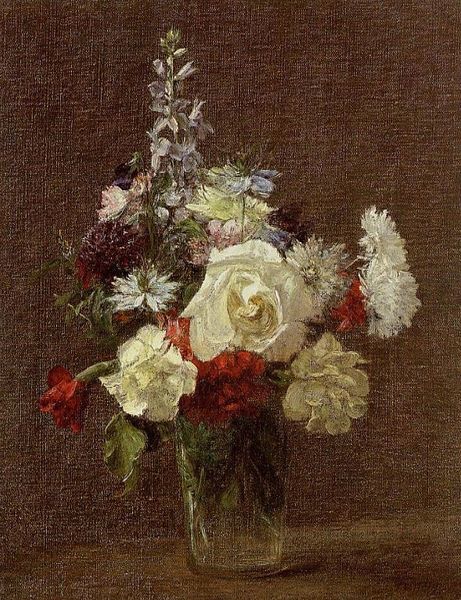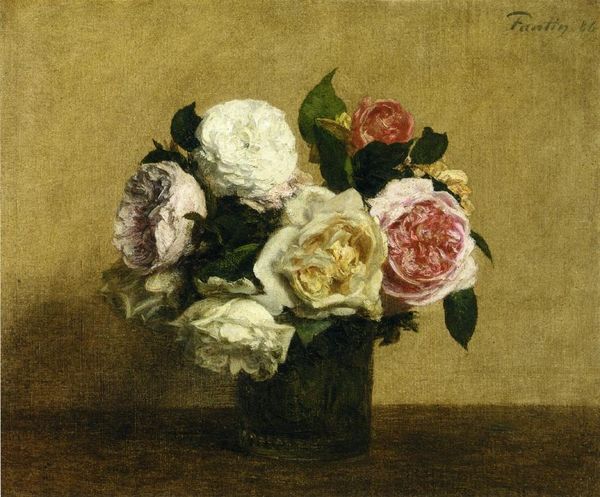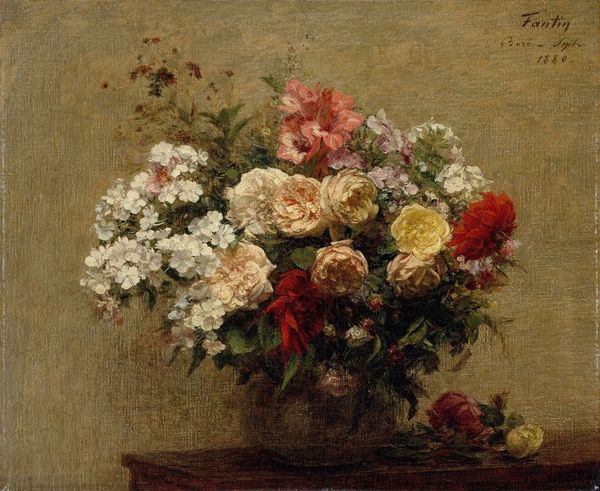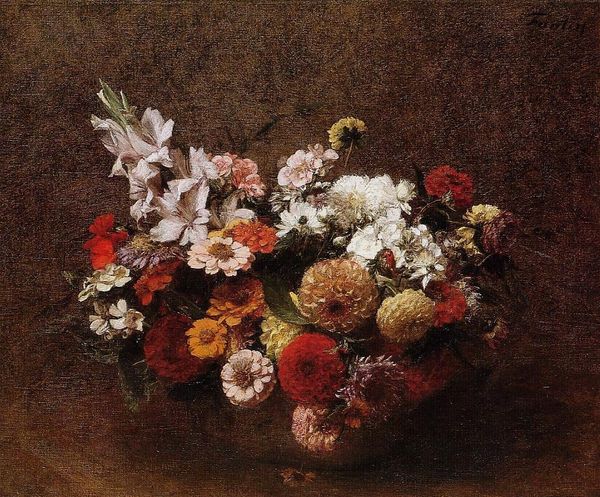
Copyright: Public domain
Curator: Fantin-Latour’s "Jonquils and Nasturtiums," painted in 1881, presents us with a delicate dance of colour and form. What’s your first take on this piece? Editor: Immediately, I'm struck by its density. The paint itself feels heavy, almost sculptural, despite the fragile subject matter. Curator: Indeed. The density of the paint application is key. Consider that this was created during a period where photography was gaining popularity, directly impacting painting. Artists like Fantin-Latour had to consider how to distinguish themselves. Still life became a safe and productive area to claim authority as a painter. Editor: Absolutely. The impasto, especially on the petals, draws attention to the labour involved. We're very aware of the artist's hand and the materiality of the oil paint here, more so than if it were a photograph of flowers. Did the rise of industrially produced paints affect his choices here? Curator: It’s definitely a valid consideration. With pre-mixed colours becoming widely available, artists had both more freedom and more awareness of colour theory. Also, we need to examine his relationship with the French Salon. He gained recognition through the institution of the Salon, painting these floral still lifes to establish and maintain the attention. Editor: Right, there's a tension here, between this painterly, handmade quality, which feels almost anti-industrial, and the way it secured his position within the artistic establishment. Looking closely, it is not as naturally posed and informal as it initially seems: the composition itself is strategically created for formal exhibition. Curator: Precisely! And there is the intriguing aspect of domesticity versus display. Bouquets of flowers were both an intimate feature of bourgeois life, yet also subject to a great amount of social artifice. It also represented, in many ways, a conservative vision of society in contrast with modernity, when rapid urbanization was underway. Editor: It's a painting full of apparent contradictions: labour and leisure, artifice and nature, tradition and innovation. Thanks, it definitely offers food for thought! Curator: My pleasure. It is quite astonishing how relevant questions around these competing notions remain to our understanding of art and its role in our society.
Comments
No comments
Be the first to comment and join the conversation on the ultimate creative platform.
